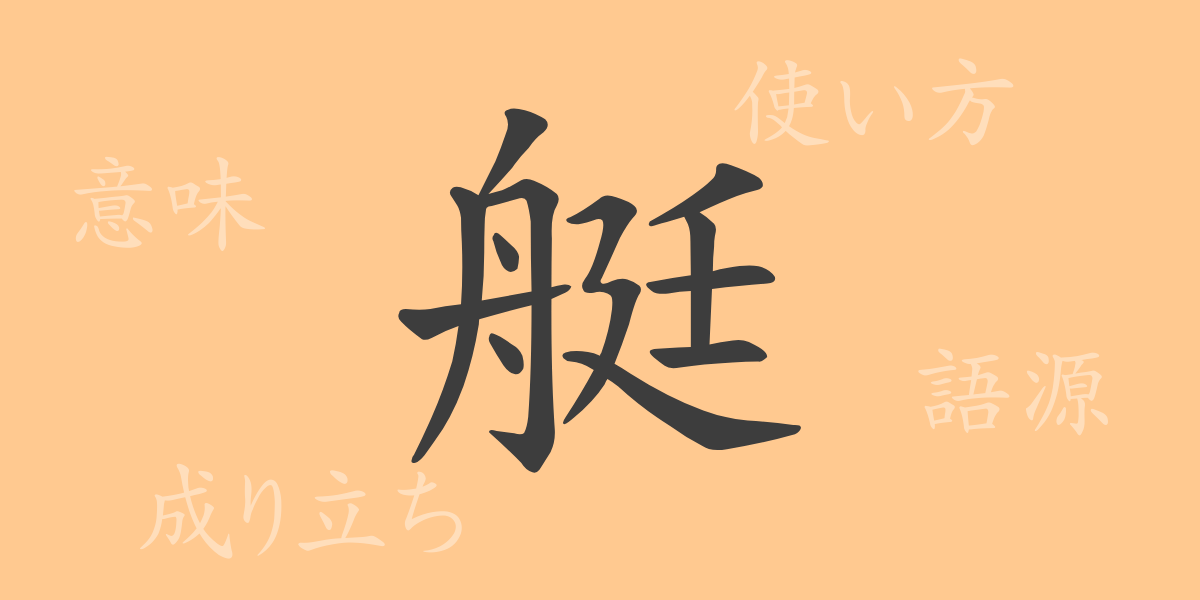Japanese kanji, each with its unique shape and meaning, are essential elements of the written language. Among these, the kanji ‘艇(テイ)’ may not appear frequently in everyday life, but it plays a crucial role in specific contexts and fields. This article delves into the origins, modern usage, and the idiomatic expressions of ‘艇’, exploring the intriguing world behind this character.
Origins of ‘艇(テイ)’
The kanji ‘艇’ represents small boats and has been used since ancient times to denote small watercrafts suitable for navigating waters. Its etymology combines ‘舟’ which means ‘boat’ and ‘亭’, suggesting smallness or lightness, thus giving ‘艇’ the meaning of a small and agile boat. This composition reflects the historical significance of ‘艇’ in protecting people by transporting them across waters efficiently.
Meaning and Usage of ‘艇(テイ)’
‘艇’ specifically refers to small types of boats such as motorboats, racing boats, and small military vessels. For example, ‘潜水艇(せんすいてい)’ refers to submarines. Typically, ‘艇’ is used as a noun in contexts describing various small watercrafts, emphasizing their role and function in transportation and operations on water.
Readings, Stroke Count, and Radical of ‘艇(テイ)’
The kanji ‘艇’ offers insights into its composition and cultural relevance through its readings and structure.
- Readings: The on’yomi (Chinese reading) is ‘テイ’, and there is no kun’yomi (Japanese reading).
- Stroke Count: ‘艇’ consists of 13 strokes.
- Radical: The radical is ‘舟’, common to kanji depicting boats or ships.
Phrases and Idioms Using ‘艇(テイ)’ and Their Meanings
Several phrases and idioms involving ‘艇’ illustrate its application in modern Japanese:
- ‘競艇(きょうてい)’: A sport involving racing motorboats, also known as a form of wagering activity.
- ‘救命艇(きゅうめいてい)’: A lifeboat used in emergency situations to save lives.
- ‘潜水艇(せんすいてい)’: Another term for a submarine, used in underwater navigation.
These terms reflect the practical applications of ‘艇’ in sports, safety, and navigation.
Conclusion on ‘艇(テイ)’
The kanji ‘艇’, as demonstrated, signifies small boats or vessels across various contexts, from ancient China to modern Japan. Its use spans from water sports to military and rescue operations, underscoring its broad relevance in Japanese life and culture. Through this exploration, we hope to have enriched your understanding of the kanji ‘艇’ and its cultural significance.

























